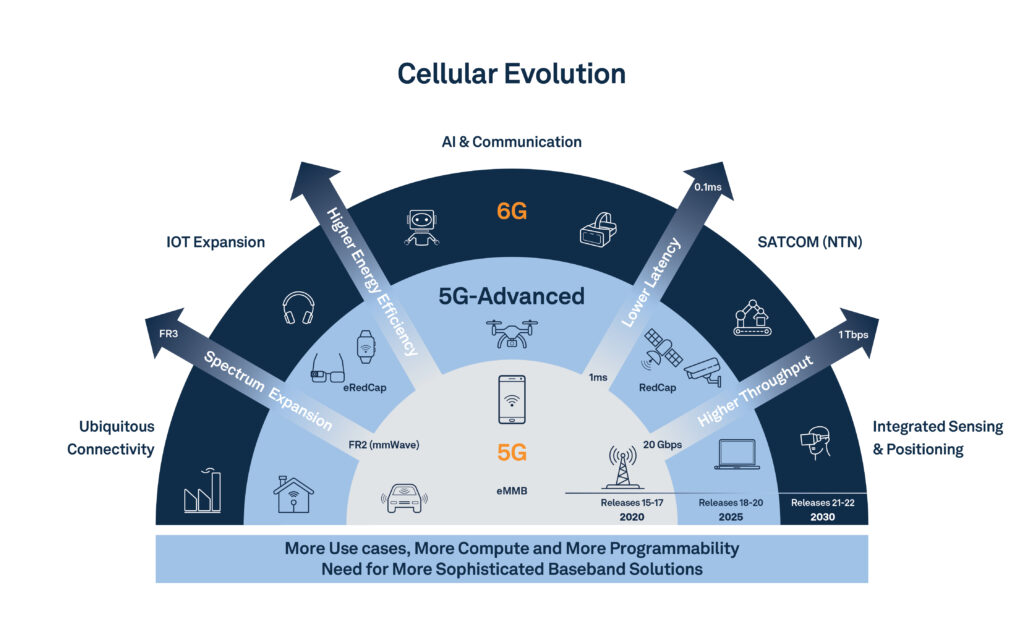As legacy networks phase out, RedCap offers a 5G-ready path for low-power, high-volume IoT
As 5G networks continue to evolve globally, a quieter but equally important transformation is underway: the integration of massive-scale, reduced capability cellular applications into the 5G ecosystem. These are the low-cost, low-power devices that make up the bulk of today’s IoT landscape — from smart meters and asset trackers to agricultural sensors and connected health monitors.
While the spotlight has often been on 5G’s high-throughput, low-latency features enabling autonomous vehicles, immersive AR/VR or industrial robotics, the reality is that massive IoT — defined by billions of simple devices — represents one of the most scalable and commercially impactful use cases for cellular connectivity.
The challenge? Many of these devices were originally deployed using 2G, 3G or LTE-M/NB-IoT technologies and don’t require (nor can they afford) the capabilities or cost overhead of full 5G New Radio (NR). Yet, as operators sunset legacy networks and re-farm spectrum, there’s a growing need for a migration path that brings these devices into the 5G domain without disrupting their core value proposition: affordability, efficiency and simplicity.

Enter RedCap: A right-sized approach to 5G
3GPP Release 17 introduced Reduced Capability (RedCap) NR as a way to bridge this gap. Sometimes referred to as NR-Light, RedCap is a streamlined version of 5G NR optimized for devices that sit between high-end smartphones and ultra-low-end NB-IoT nodes.
RedCap devices have lower peak data rates, reduced bandwidth requirements (down to 5 or 10 MHz) and lower power consumption, making them ideal for applications like industrial sensors, wearable health monitors, surveillance cameras and fleet trackers.
What makes RedCap compelling is that it brings these use cases into the 5G fold without the burden of full NR complexity. This not only reduces device cost and power needs, but also enables better longevity, global coverage and access to the evolving 5G network infrastructure — including private networks and network slicing.
Compatibility without complexity
A key strength of RedCap is its compatibility with the broader 5G system, both in terms of spectrum and infrastructure. Unlike legacy IoT protocols that required parallel networks or gateways, RedCap devices can coexist on the same spectrum and RAN infrastructure as enhanced Mobile Broadband (eMBB) and Ultra-Reliable Low Latency Communications (URLLC) applications.
For operators, this is a cost-effective way to extend the value of their 5G investments while sunsetting older networks. For device manufacturers and solution providers, it means less fragmentation and a more unified design path.
Importantly, RedCap isn’t a “one-size-fits-all” replacement for LTE-M or NB-IoT. Instead, it complements them by addressing use cases that require moderate throughput, reduced latency, or enhanced mobility—without stepping into the complexity and cost of full 5G NR.
Global implications for smart infrastructure
From a market perspective, RedCap is particularly significant for regions with vast deployments of mid-range IoT devices — such as smart grids, logistics hubs and city infrastructure. Many of these deployments rely on decades-old cellular technologies that face obsolescence as 2G and 3G networks are shut down.
By offering a standardized, future-proof path forward, RedCap helps preserve investments in IoT infrastructure while enabling access to newer features like end-to-end network slicing, security enhancements and cloud-native orchestration that are part of 5G networks.
In private network settings—such as manufacturing plants, warehouses and airports — RedCap-enabled devices can deliver more deterministic performance and tighter integration with enterprise systems, supporting smart operations without the need for expensive high-throughput hardware.
Ecosystem momentum and next steps
The commercial viability of RedCap depends not only on the 3GPP specifications, but also on the availability of chipsets, modules and network support. Leading infrastructure vendors and mobile operators have already begun trials and announced support, while the semiconductor ecosystem is responding with dedicated low-complexity 5G platforms.
Looking ahead, 3GPP Release 18 and beyond will refine RedCap’s capabilities further, addressing areas like power optimization, positioning and expanded frequency support —including unlicensed and shared spectrum.
As the industry pushes toward greater 5G adoption, RedCap offers a critical mechanism for ensuring inclusivity—pulling high-volume, reduced-capability devices into the next-generation wireless fabric without disruption or unnecessary cost.
Conclusion
Massive IoT doesn’t need the full force of 5G’s capabilities — but it does need a sustainable, future-proof path forward. RedCap provides that path. It enables the industry to unify around a common 5G platform, bringing together the extremes of ultra-fast connectivity and ultra-efficient device networking.
By enabling the integration of reduced-capability cellular applications into the 5G ecosystem, RedCap ensures that the next generation of wireless networks is not just fast, but also wide-reaching, scalable and inclusive — a foundation not just for premium devices, but for the billions of smart, connected endpoints that quietly power our world.

